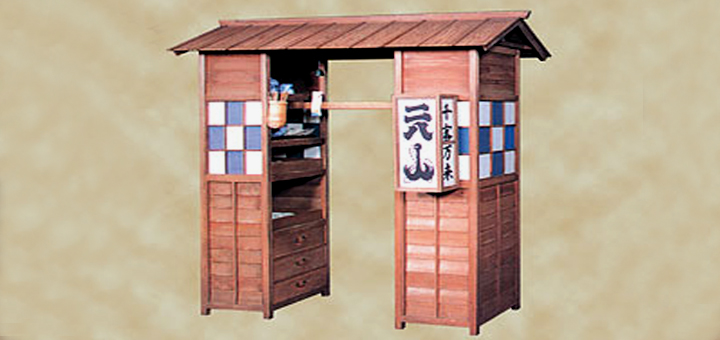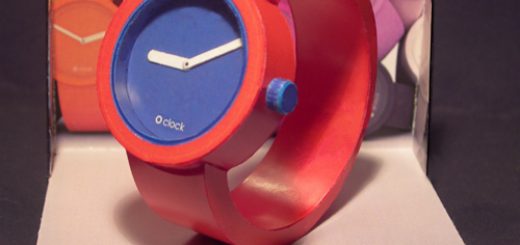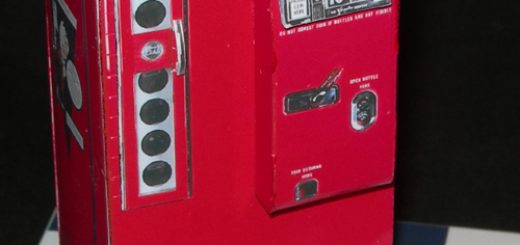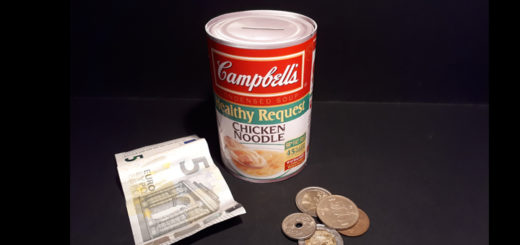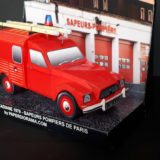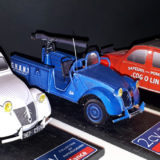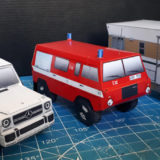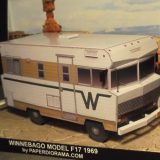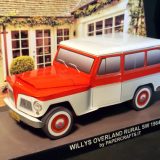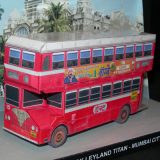Yatai
Yatai are typically wooden carts (are another expression of Japanese compactness), equipped with kitchen appliances and seating. Handles and seating fold into the cart while it is being transported.
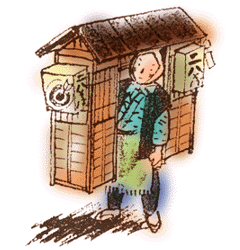 Yatai are descended from food stalls established outside of Buddhist shrines from the 5th to 7th century.Historian Hiroaki Ichikawa has said the origins of contemporary yatai are in the Edo period (1603-1867), during which dignitaries of the court would often travel between the capital and their homes. As these dignitaries traveled, yatai provided a simple food option.
Yatai are descended from food stalls established outside of Buddhist shrines from the 5th to 7th century.Historian Hiroaki Ichikawa has said the origins of contemporary yatai are in the Edo period (1603-1867), during which dignitaries of the court would often travel between the capital and their homes. As these dignitaries traveled, yatai provided a simple food option.
The most famous three ones yatai stalls were for Sushi, Tenpura and Soba buckwheat noodles, the prize of Soba was in doubles of four Mon, the smallest coin available in Edo.
Simple Soba were just 16 Mon (about 320 Yen/3 USD now), Tempura Soba and other delicious toppings cost 32 Mon
Others sold food based on cooked rice, like Inarizushi, Chameshi rice cooked with green tea or Mugimeshi mixed with barley. Others sold all kinds of mixes soups. Sweets were also sold in Yatai stalls.
The yatai was carried around, but it had all that was needed. A lamp (andon) at one side, stove (kama) at the other. There were about 7600 yatai in Edo, because there were so many single men coming here to work who needed food.

